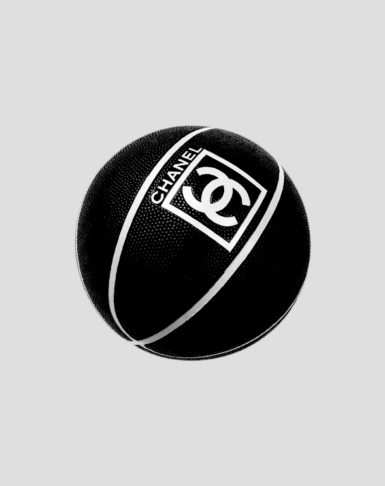This article originally appeared in Brandingmag
Leesa Wytock is what you might call an experienced leader of experience. Across diverse roles and industries, she’s built a view on branding that tugs at the roots—and heartstrings—of solid, strategic positioning. Leesa sat down with Brandingmag to share her thoughts on brand authenticity, the importance of looking up from your smartphone and why when it comes to experiences, less is more.
Brandingmag: You recently stated, “Brands will need to think beyond creating experiences they want people to adhere to and start thinking about creating behaviors they want people to adopt.” Fascinating concept. Can you please elaborate and give a few tangible steps on how brands can create behaviors people want to adopt?
Leesa Wytock: It’s about examining the psychological behaviors of people and understanding what it takes to create a compelling brand experience. A brand experience is about changing behaviors and influencing actions. When it comes to experiences, less is more. Instead of being everywhere all the time, brands that start thinking about behaviors they want people to adopt will be more targeted, useful, and streamlined, Consequently, they may have less interaction with their customers, but potentially, more powerful interactions.
An example of this is the Starbucks app. Not only do they support your behavior (whatever your beverage choice) and remain aware that their customers go to them in an almost blind state (i.e., visiting the same location daily, ordering the same drink), Starbucks builds their system around simplifying and automating their customers’ needs. You’re not going to forgo your coffee if you forgot your wallet because you have the app on your smartphone.
Starbucks is trying to break normal habits without disturbing the status quo. They’re doing this exciting thing whereby they promote new product lines in their app by using gamification. For example, they’ll offer customers extra points for trying new blends. That shows an understanding of what drives people to stray from their usual drink order. Starbucks has done a fascinating job of introducing new products in a way that plays into their system. I would be interested to see the adoption rate of how many people are trying the products that are promoted within the app.
Bm: Can you give us a few tangible steps by which brands can create behavior?
LW: We’ll have clients approach Siegel+Gale and say, “We need to improve our customer experience” or “We need to improve our sales experience,” and it’s usually about something convoluted that needs simplification. But when we start to dig deeper, clients begin to say things like, “We want to be known as the Uber of X.” What we do in our initial conversations is distill that so we can learn what their real ambition is, and clearly define what behavior it is that they want people to adopt. Then, very quickly the conversation gets incredibly personal and, therefore, more authentic.
The successful brands consider how they can interact with their customers more authentically. Concentrate on the user and understand their behaviors; what are potential emotional, behavioral moments and triggers?
Bm: Reminds us of the AR-powered makeup trial experience that you now see at stores like Sephora…
LW: Absolutely. It goes back to experience being extremely user-driven. One thing that brands have to do when deciding which behaviors they want consumers to adopt is to get quite analytical—test them, iterate, watch and learn. Many times, how consumers interact with brands or with products is not necessarily what the brand or product was initially designed to do. By adopting an iterative approach, brands can build in feedback loops from the end-user. This is incredibly effective in helping clients identify what behaviors they want people to adopt.
Bm: A few years ago, Target announced it will phase out some gender-based signs in its stores, specifically in the toy and bedding aisles. In a previous article you stated, “Target is doing what a good brand does.” In your opinion, what constitutes a good brand and what should good brands do?
LW: A successful brand focuses on active listening and thinking versus reactive adjustment. It’s about listening to what the customer base is responding to. Starting with that core belief, center of gravity, and North Star– all the things that a good brand positioning does, makes that part easier.
When I think about a “good” brand, I consider the modern-day version of brands–the version that isn’t solely about colors and logos, but rather the totality of experience that you have with a brand. At Siegel+Gale, we believe good brands are experience brands. Sometimes, people will say, “Oh, I think Amazon is a great brand.” But, then, we ask people to peel the onion a little bit and consider how they experience the brand. What is their awareness– meaning, how are they finding out about it in the world? What is that interaction like? Does it reflect what that brand stands for? Then, we move into the customer experience: what is that brand doing for you when you become a paying or engaged customer? And, finally, what is it like when you’re using that brand or living with it? Is the brand creating any rewards for your loyalty? An excellent example of this is Spotify allowing people to connect and creating a global community of music lovers. The brand has built a community that you can tap into.
Lastly, what is that employee experience? How are they treating their employees? What’s the onboarding process like? How is it when you interact with an employee from that brand? That is a good brand—an experience brand that ticks the box on all aspects of the customer journey.
Bm: Do you think a good brand is also one that corrects, makes shifts, and takes responsibility quickly?
LW: Absolutely. It’s terrific that we are in a place where corporate brands are adapting and embracing pride, diversity, and equality because that was not the case 15 years ago. On the flip side, it goes back to brand authenticity and what you stand for. When Uber changes its app icon from a car to a rainbow, it feels a little off to me. What are they doing to affect change in that arena? What do they stand for? Are they donating a percentage of proceeds towards charities that support trans kids? It goes back to what you stand for and what a good brand does—adapts quickly, listens to what’s going on, and being authentic about it, as well.
Bm: What are the key steps for brands to recognize when creating high impact social and mobile strategies or designing intuitive and engaging user experiences?
LW: The key to user experience is to form an idea or a hypothesis and then try to break it. Consider what you want your users to do and what you think it is that they want. Fact-check that idea, whether it be through research, user testing, focus groups, etc. Never go in with an assumption and a rigid plan because even the most fabulous ideas can fall short.
As the simplicity company, when it comes to intuitive user experiences, it’s about having laser focus when creating a simple, impactful experience.
It may seem little counter-intuitive, but brands may need to withdraw slightly. Right now, a lot of brands are everywhere, but that’s not sustainable; you’re not going to have meaningful impact or interactions with people. If you’re everywhere, then you are kind of nowhere, versus showing up in smart, focused ways. This goes back to the beginning, to being very attentive to the user and the behaviors you want. It helps to carefully consider where and how you should show up.
Bm: In my article, 6 Dominant Branding Themes For A Savvy 2018, I stated, “The way brands interact with consumers will be greatly influenced by the use of artificial intelligence.” What are the best ways for brands to approach AI? Any tips?
LW: One way is ensuring that brands understand how to retain those moments of empathy and connection when it matters most. The best AI, smart experiences are the ones that are a sum of all of our user input. In general, it’s understanding my habits in a way the feels natural when providing me with new suggestions.
Where it can go wrong is where it veers into Big Brother territory. Consider how the Google browser adapted and changed over the years. Remember how you used to type in the search keyword, a plus sign, and then the keyword to pull up results? Google changed their behavior because they realized that people were typing in questions. That made them improve how we interact with the search browser.
Bm: Trademark question: What’s next? For example, as it relates to brands and experiences?
LW: I have three interesting topics; I don’t necessarily know where they are going to go yet, but they’ve been top-of-mind for me.
The first is knowing your role. Brands need to understand that it’s more about the role they play in our lives and respecting those boundaries; accepting the role they play in my life while delivering consistently good experiences. That attention will start to reward those brands that comprehend the oversaturated world that we live in. People are going to begin to understand and embrace brands that provide value when asked and when needed, but not always on-demand. In other words, those brands that are respectful vis-à-vis their roles in our lives.
The second one is this idea of spontaneity. By having the ability to do almost everything through a smartphone, we are losing some of our adaptability, along with the surprise and delight of knowing that everything in life is uncertain. I often look around and see how my fellow New Yorkers are always on their phones; there are no moments of spontaneity anymore. I wonder if the newer generation is going to revert, similar to how they’re currently adopting our terrible 90s fashion trends. I wonder if they’ll reject the notion of technology knowing everything about their lives.
This ties into my third point, which is this idea of calling a spade a spade. Newer generations do not fear calling brands out, boycotting them and saying, “This is not what I want.” When I think of my generation, we chalked it up to, “Well, that’s corporate America.” We had this acceptance of how things work. Today, there is this wonderful upflow of people having a voice because brands do have to listen.
Regarding your point about whether good brands listen and react fast, this notion of calling brands out on their missteps is only going to continue to grow. Ideally, the outcome will be more authenticity for brands, knowing their place in the world, and comprehending where they should and should not play. It could lead to a fascinating place—not necessarily just corporate and social responsibility, but also all the other aspects of a brand that make it altruistic.


